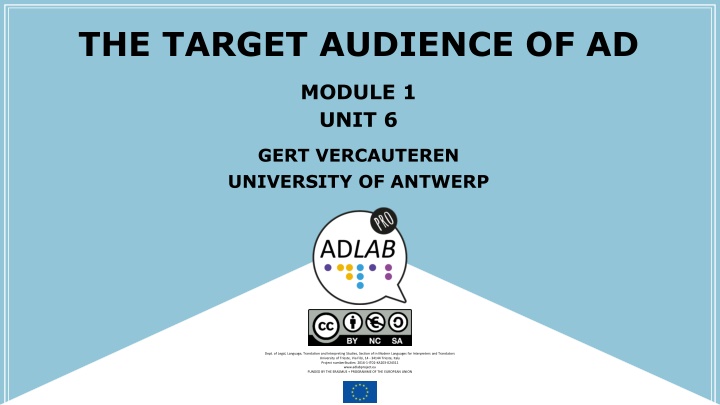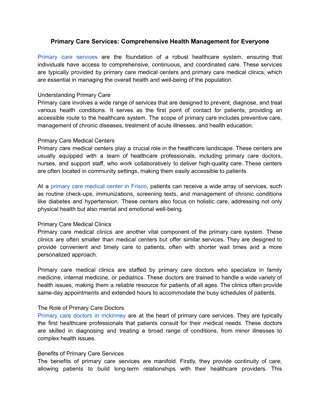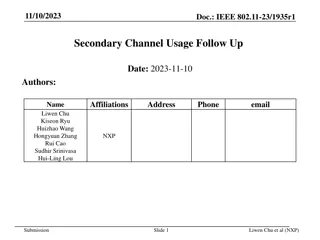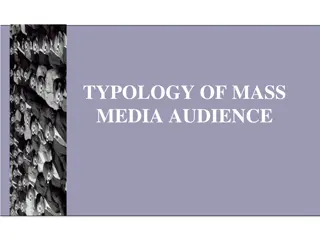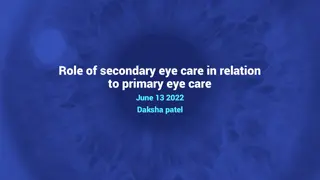Primary & Secondary Target Audiences for Inclusive AD Services
In this module, the primary focus is on the visually impaired, including blind and partially sighted individuals. The content delves into the nuances of catering to these diverse audiences, from those born blind to those who lost their sight later in life. Additionally, it explores the importance of creating inclusive ads that not only resonate with the primary target audience but also consider the needs of the broader secondary audience. Understanding the unique challenges faced by individuals with sight loss is key to developing effective advertising strategies that can be enjoyed by all.
Download Presentation

Please find below an Image/Link to download the presentation.
The content on the website is provided AS IS for your information and personal use only. It may not be sold, licensed, or shared on other websites without obtaining consent from the author.If you encounter any issues during the download, it is possible that the publisher has removed the file from their server.
You are allowed to download the files provided on this website for personal or commercial use, subject to the condition that they are used lawfully. All files are the property of their respective owners.
The content on the website is provided AS IS for your information and personal use only. It may not be sold, licensed, or shared on other websites without obtaining consent from the author.
E N D
Presentation Transcript
THE TARGET AUDIENCE OF AD MODULE 1 UNIT 6 GERT VERCAUTEREN UNIVERSITY OF ANTWERP Dept. of Legal, Language, Translation and Interpreting Studies, Section of in Modern Languages for Interpreters and Translators University of Trieste, Via Filzi, 14 - 34144 Trieste, Italy Project numberStudies: 2016-1-IT02-KA203-024311 www.adlabproject.eu FUNDED BY THE ERASMUS + PROGRAMME OF THE EUROPEAN UNION
INTRODUCTION TO THE UNIT - AD is for people with sight loss => oversimplification - Primary target audience = very heterogeneous group - Large and diverse secondary target audience
PRIMARY TARGET AUDIENCE (1) - 253 million people worldwide are visually impaired (WHO, 2018) - 36 million blind people - 217 million people with moderate or severe sight loss. Numbers could triple because of population growth & ageing
PRIMARY TARGET AUDIENCE (2) Blind people - Small group born blind - Majority became blind at various stages later in life => Difference in terms of mental representation of concrete concepts (e.g. colours)
PRIMARY TARGET AUDIENCE (2) Partially sighted people - cataract: clouded or blurry vision - damage to optic nerve: tunnel vision - defects to retina: loss of peripheral vision Primary target audience member does not exist.
SECONDARY TARGET AUDIENCE (2) - Older people: explain fast paced or complex tv programmes, plays, etc - School children: signal the most relevant information in educational content - People with mental impairments: explain emotions and explicit contextualisation - Sighted people: explain what happens, while they do other tasks.
WHAT KIND OF AD IS WANTED? - No one size fits all - Golden mean never golden for everyone Cater for the needs of the primary target audience, so they can understand and enjoy the product that is described.
THE TARGET AUDIENCE OF AD MODULE 1 UNIT 6 GERT VERCAUTEREN UNIVERSITY OF ANTWERP Dept. of Legal, Language, Translation and Interpreting Studies, Section of in Modern Languages for Interpreters and Translators University of Trieste, Via Filzi, 14 - 34144 Trieste, Italy Project numberStudies: 2016-1-IT02-KA203-024311 www.adlabproject.eu FUNDED BY THE ERASMUS + PROGRAMME OF THE EUROPEAN UNION
The preparation of this presentation was supported by ADLAB PRO (Audio Description: A Laboratory for the Development of a New Professional Profile), financed by the European Union under the Erasmus+ Programme, Key Action 2 Strategic Partnerships, Project number:2016-1-IT02-KA203-024311.
The information and views set out in this presentation are those of the authors and do not necessarily reflect the official opinion of the European Union. Neither the European Union institutions and bodies nor any person acting on their behalf may be held responsible for the use which may be made of the information contained therein.
